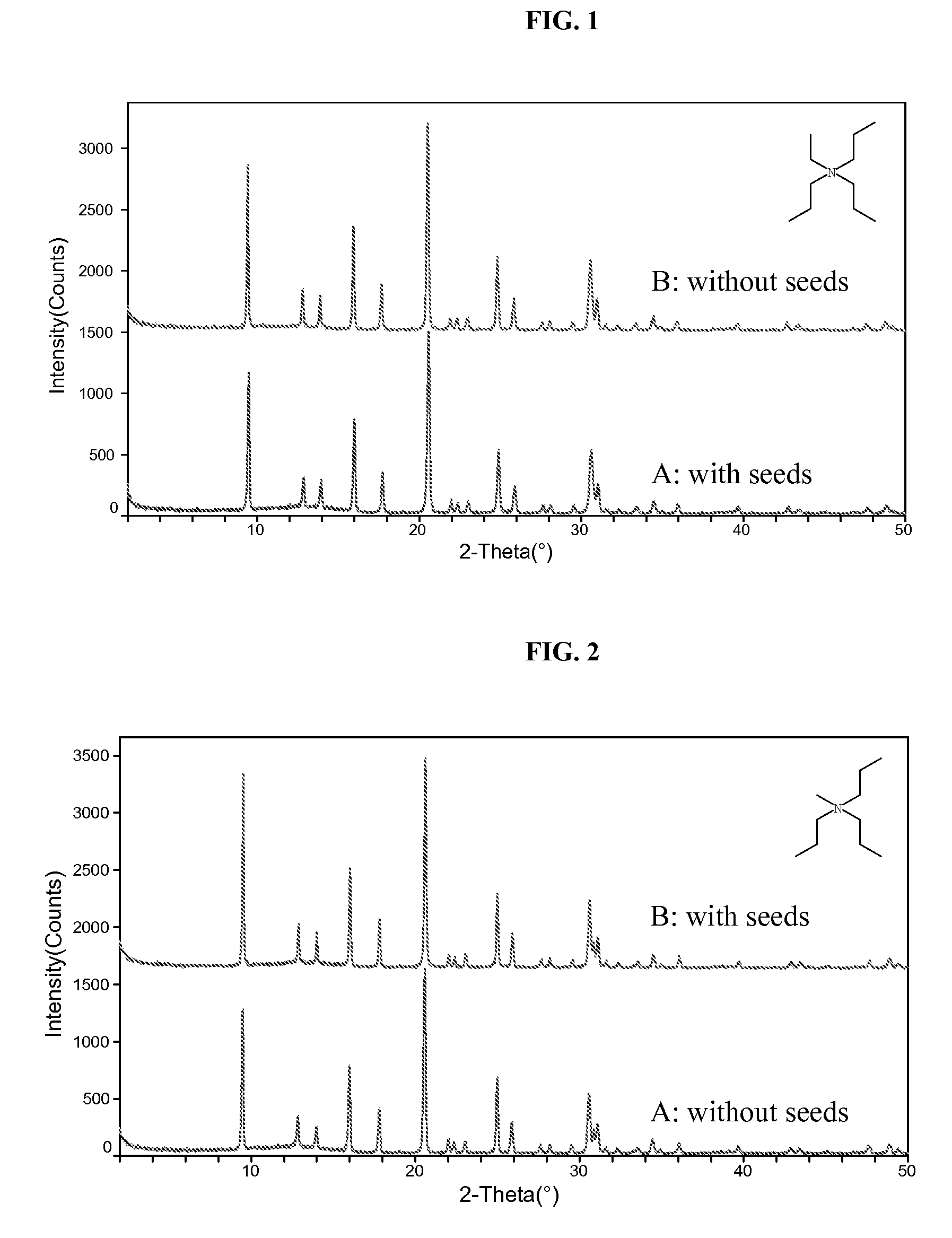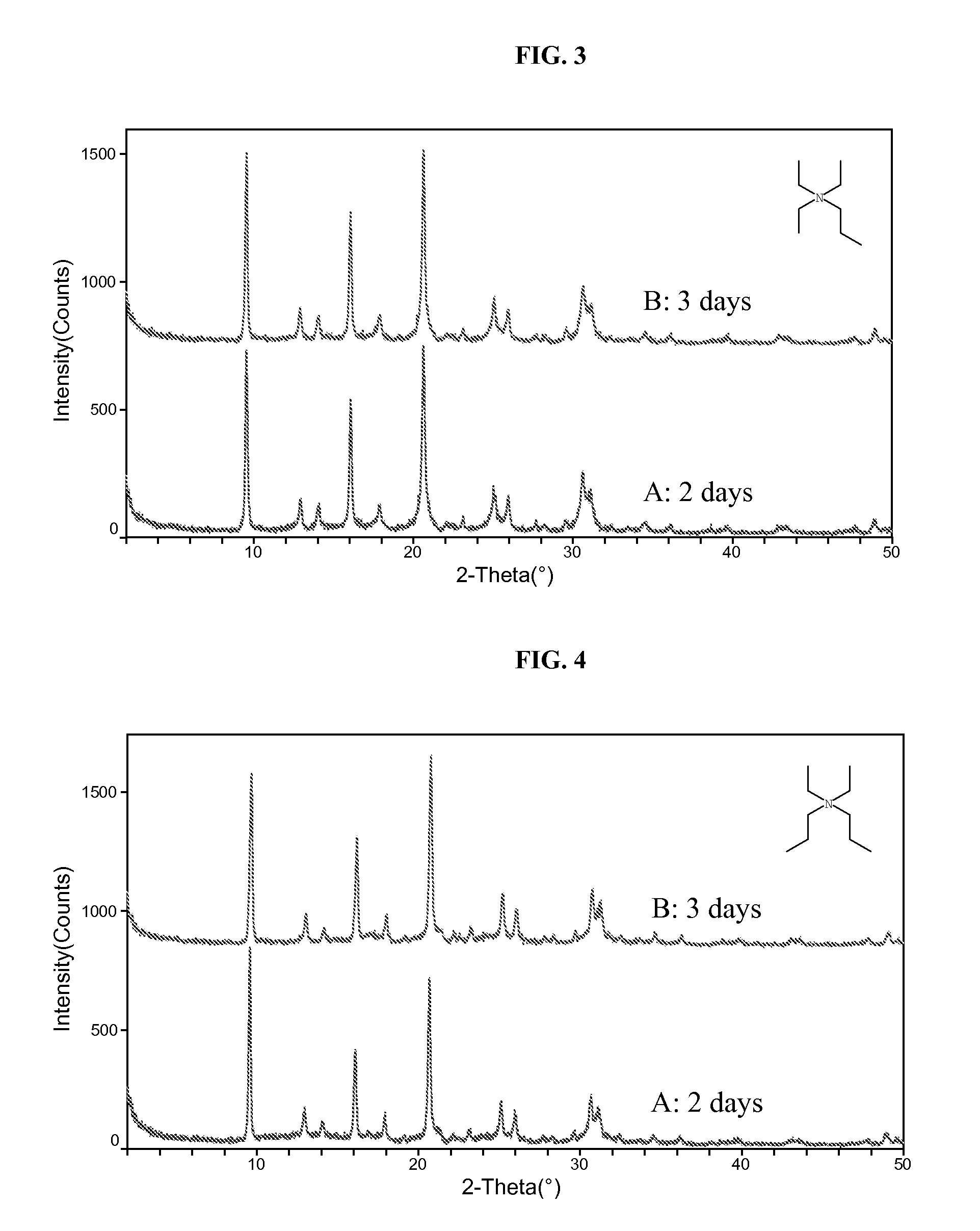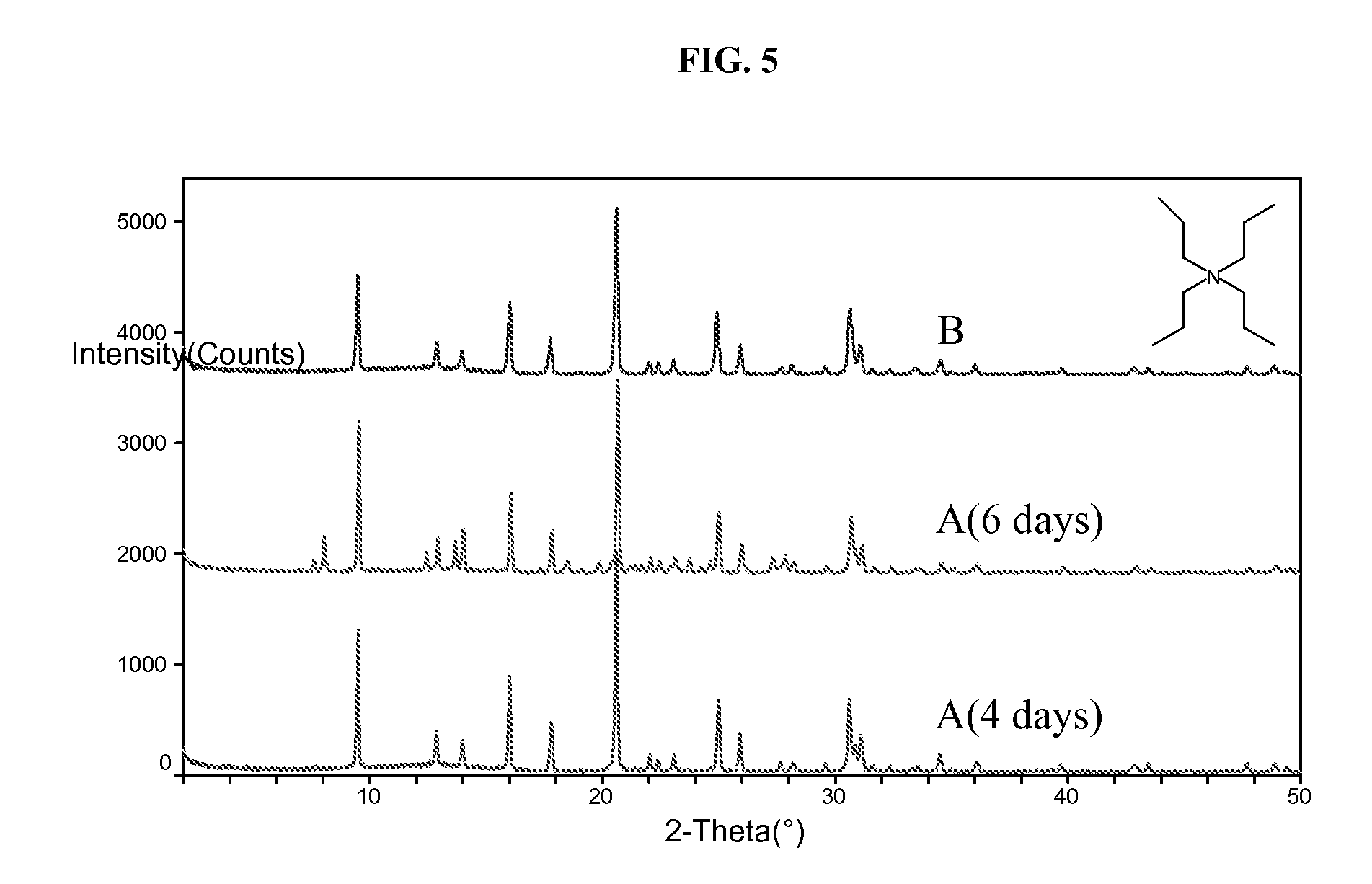Synthesis Of Chabazite Structure-Containing Molecular Sieves And Their Use In The Conversion Of Oxygenates To Olefins
a technology of molecular sieves and chabazite, which is applied in the direction of physical/chemical process catalysts, hydrocarbon oil treatment products, silicon compounds, etc., can solve the problems of limiting catalyst life, increasing the potential for undesired secondary reactions, and lowering the diffusion rate of reactants and products
- Summary
- Abstract
- Description
- Claims
- Application Information
AI Technical Summary
Problems solved by technology
Method used
Image
Examples
example 1
Preparation of Templates
Ethyltripropylammonium Hydroxide (ETPAOH)
[0073]To a solution of 44.0 g tripropylamine (0.307 mole) in 50 g ethanol, contained in a polypropylene bottle and chilled with an ice bath, was added drop-wise 52.7 g iodoethane (0.338 mole) over 30 minutes with stirring. All chemicals were reagent grade from Aldrich and were used as received. The propylene bottle was sealed and the content was allowed to warm up to room temperature and then heated to 40° C. in an oven for two days. Chilling of the contents in a refrigerator resulted in the formation of iodide crystals. Two crops were harvested, which were then dissolved in deionized water and ion-exchanged (3×) with MTO-Dowex® SBR LCNG OH-Form anion exchanger until AgNO3 test was negative for iodide. The resultant ETPAOH solution was then concentrated on a rotavap to 330 g, and the concentration of the solution was determined by titration with HCl to be 0.740 M or 13.9 wt %. The overall yield was 79%.
Methyltripropyla...
example 2
Preparation of [Si—Al—P—O]-CHA using ETPAOH as Template
[0077]The following ingredients were mixed, in sequence, and blended into a uniform gel using a microhomogenizer (Tissue Tearor Model 98730 available from Biospec Products, Inc, USA): 85 wt % H3PO4 (obtained from Aldrich Chemical Company), H2O, Catapal™ A (74 wt % Al2O3, available from CONDEA Vista Company, Texas, USA), Cabosil™ silica (available from Cabot Corporation, Illinois, USA), and then the ETPAOH obtained as described in Example 1. The molar ratio of the ingredients was as follows:
2.0 ETPAOH:1.0 Al2O3:0.3 SiO2:1.0 P2O5:51 H2O
[0078]The resultant gel was divided into two equal portions. To portion A was added 200 PPM colloidal SAPO-34 seeds while no seeds was added to portion B. Both gels were then sealed in Teflon-lined Parr autoclaves. The autoclaves were placed in an oven whose temperature was set at 180° C. The autoclave containing A was taken out of the oven after 2 days while B was taken out after 5 days. After quen...
example 3
Preparation of [Si—Al—P—O]-CHA using MTPAOH as Template
[0080]The same procedure as Example 2 was followed, except that MTPAOH was used in place of ETPAOH. The gel compositions were as follows:
2.0 MTPAOH:1.0 Al2O3:0.3 SiO2:1.0 P2O5:91 H2O, no seeds for A 2.0 MTPAOH:1.0 Al2O3:0.3 SiO2:1.0 P2O5:51 H2O, with colloidal SAPO-34 seeds for B.
[0081]Gel A was heated at 180° C. for 5 days and gel B was heated at 180° C. for 2 days, with no agitation. Yields for A and B were 4.3% and 6.8%, respectively. Elemental analysis gave the following molar compositions: Al1.0Si0.190P0.785 for A and Al1.0Si0.193P0.729 for B. The XRD patterns of the products are shown in FIG. 2.
PUM
 Login to View More
Login to View More Abstract
Description
Claims
Application Information
 Login to View More
Login to View More - R&D
- Intellectual Property
- Life Sciences
- Materials
- Tech Scout
- Unparalleled Data Quality
- Higher Quality Content
- 60% Fewer Hallucinations
Browse by: Latest US Patents, China's latest patents, Technical Efficacy Thesaurus, Application Domain, Technology Topic, Popular Technical Reports.
© 2025 PatSnap. All rights reserved.Legal|Privacy policy|Modern Slavery Act Transparency Statement|Sitemap|About US| Contact US: help@patsnap.com



